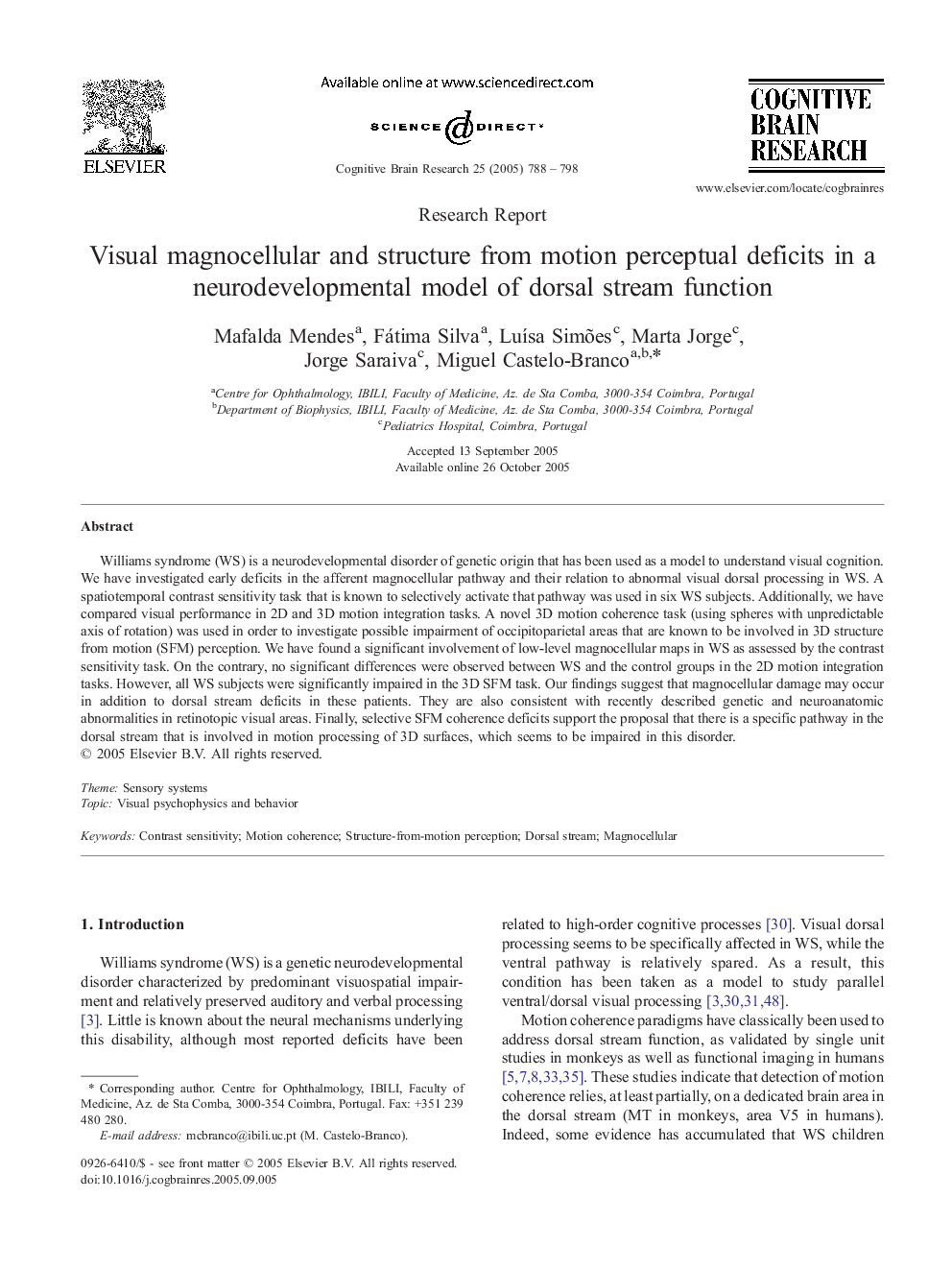| Article ID | Journal | Published Year | Pages | File Type |
|---|---|---|---|---|
| 9407969 | Cognitive Brain Research | 2005 | 11 Pages |
Abstract
Williams syndrome (WS) is a neurodevelopmental disorder of genetic origin that has been used as a model to understand visual cognition. We have investigated early deficits in the afferent magnocellular pathway and their relation to abnormal visual dorsal processing in WS. A spatiotemporal contrast sensitivity task that is known to selectively activate that pathway was used in six WS subjects. Additionally, we have compared visual performance in 2D and 3D motion integration tasks. A novel 3D motion coherence task (using spheres with unpredictable axis of rotation) was used in order to investigate possible impairment of occipitoparietal areas that are known to be involved in 3D structure from motion (SFM) perception. We have found a significant involvement of low-level magnocellular maps in WS as assessed by the contrast sensitivity task. On the contrary, no significant differences were observed between WS and the control groups in the 2D motion integration tasks. However, all WS subjects were significantly impaired in the 3D SFM task. Our findings suggest that magnocellular damage may occur in addition to dorsal stream deficits in these patients. They are also consistent with recently described genetic and neuroanatomic abnormalities in retinotopic visual areas. Finally, selective SFM coherence deficits support the proposal that there is a specific pathway in the dorsal stream that is involved in motion processing of 3D surfaces, which seems to be impaired in this disorder.
Keywords
Related Topics
Life Sciences
Neuroscience
Behavioral Neuroscience
Authors
Mafalda Mendes, Fátima Silva, LuÃsa Simões, Marta Jorge, Jorge Saraiva, Miguel Castelo-Branco,
